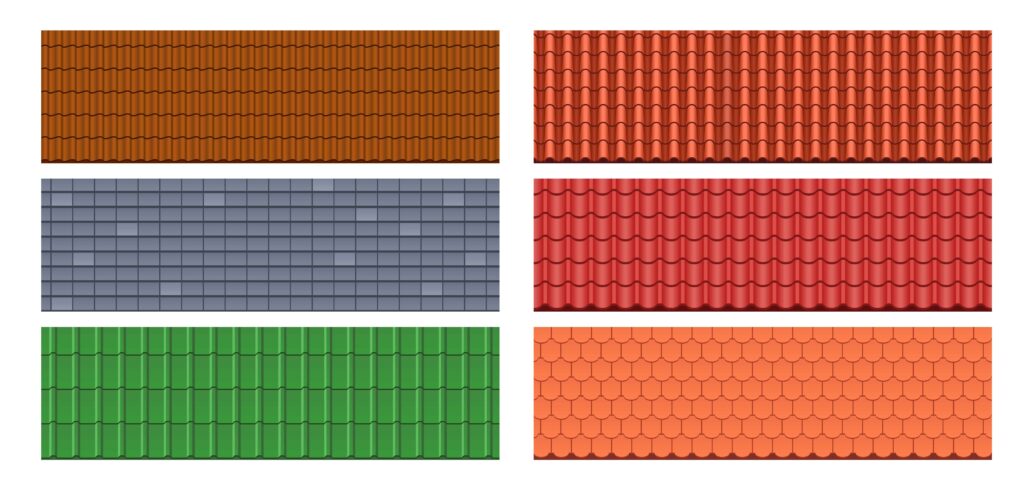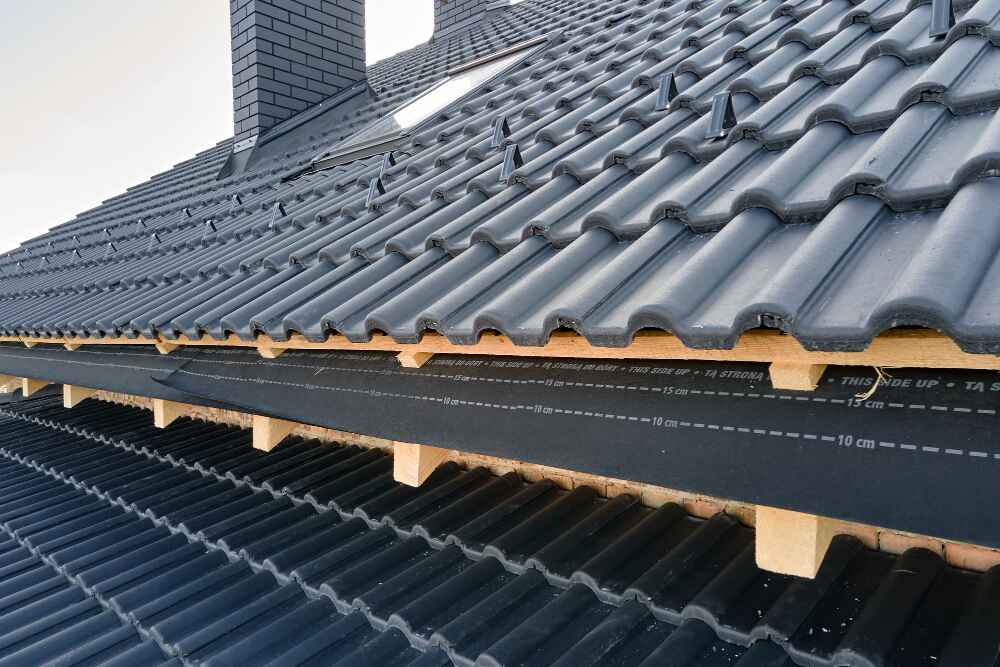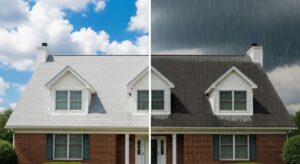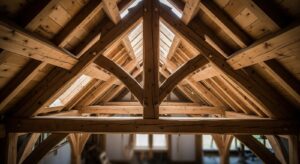Imagine discovering water dripping from your ceiling during the next heavy rainstorm. The panic, the scrambling for buckets, the expensive emergency repairs—all because of neglected roof maintenance. Sound like a nightmare? For thousands of property owners every year, it’s a costly reality that could have been prevented.
Your rubber roof is more than just a protective barrier—it’s your property’s first line of defense against the elements. Whether you’re managing a commercial building, maintaining an RV, or caring for a residential flat roof, understanding rubber roof maintenance is crucial for protecting your investment and ensuring decades of reliable performance.
Here’s what most property owners don’t realize: Rubber roofs, when properly maintained, can last 20-30 years or more. But without regular care, they might fail in as little as 5-7 years. The difference? A systematic approach to maintenance that we’ll explore in this comprehensive guide.
Whether you’re dealing with EPDM, TPO, or other rubber roofing materials, this guide will transform you from a worried property owner into a confident roof maintenance expert. Let’s dive into the strategies that’ll save you thousands while keeping your property bone-dry for decades to come.
Understanding Rubber Roofing Systems and Their Importance
Before we jump into maintenance specifics, let’s understand what makes rubber roofing so popular across residential, commercial, and RV applications. Rubber roof maintenance isn’t just about cleaning—it’s about preserving a sophisticated system designed to withstand decades of weather punishment.
Rubber roofing systems consist of several critical components working together to create a watertight barrier. The membrane itself is just one piece of the puzzle. Underneath, you’ll find insulation layers, vapor barriers, and structural decking that all play roles in the system’s performance.
The beauty of rubber roofing lies in its flexibility and durability. Unlike traditional roofing materials that can crack or break under stress, rubber membranes can flex with temperature changes and building movement. This flexibility, however, requires specific maintenance approaches to preserve its integrity over time.
The Science Behind Rubber Roof Longevity
Modern rubber roofing materials are engineered to resist UV radiation, extreme temperatures, and chemical exposure. However, these protective properties diminish over time without proper care. UV rays break down the polymer chains in rubber, leading to chalking, cracking, and eventual membrane failure.
Regular maintenance essentially “resets” these protective properties, restoring flexibility and extending the roof’s lifespan. This is why properties with documented maintenance programs consistently outperform neglected roofs by 10-15 years or more.
Types of Rubber Roofing Materials

EPDM (Ethylene Propylene Diene Monomer) Roofing
EPDM represents the gold standard in rubber roofing, particularly for commercial applications. This synthetic rubber membrane offers exceptional durability and weather resistance, making epdm roof maintenance a critical skill for facility managers and property owners.
Key EPDM Characteristics:
- Excellent UV resistance and weather durability
- Superior flexibility in extreme temperatures
- Chemical resistance to most environmental contaminants
- Available in black and white formulations
- Proven track record spanning decades
EPDM Maintenance Considerations:
- Requires petroleum-free cleaning products
- Benefits from regular conditioning treatments
- Seam integrity is critical for long-term performance
- Compatible with specific sealants and adhesives
TPO (Thermoplastic Polyolefin) Roofing
TPO roofing has gained popularity due to its energy efficiency and installation advantages. While sharing some characteristics with EPDM, TPO requires different maintenance approaches.
TPO Advantages:
- Heat-weldable seams for superior watertightness
- Excellent energy efficiency through reflective properties
- Good chemical resistance
- Recyclable at end of life cycle
TPO Maintenance Requirements:
- Different cleaning products than EPDM
- Seam maintenance focuses on welded joints
- UV protection through specialized treatments
- Thermal expansion considerations
PVC (Polyvinyl Chloride) Roofing
PVC roofing offers excellent chemical resistance and fire safety properties, making it popular for industrial applications.
PVC Characteristics:
- Superior chemical resistance
- Inherent fire resistance
- Excellent long-term durability
- Hot-air welded seams
Understanding your specific rubber roofing material is crucial for developing an effective maintenance program. Each material has unique properties that influence cleaning methods, compatible products, and maintenance schedules.
Essential Tools and Products for Rubber Roof Maintenance
Building Your Maintenance Arsenal
Success in rubber roof maintenance depends on having the right tools and products. Here’s your essential toolkit for professional-grade maintenance:
Cleaning Equipment:
- Soft-bristled brushes (avoid wire brushes that can damage membranes)
- Pressure washer with adjustable settings (low pressure only)
- Extension poles for hard-to-reach areas
- Microfiber cloths for detail work
- Squeegees for water removal
Inspection Tools:
- High-quality flashlight or headlamp
- Measuring tape for damage assessment
- Digital camera for documentation
- Chalk or markers for marking problem areas
- Moisture meter for detecting hidden leaks
Cleaning Products:
- Rubber roof-specific cleaners (avoid harsh chemicals)
- Mildew and algae removers
- Degreasing agents for stubborn contaminants
- pH-neutral cleaners for sensitive areas
Repair and Maintenance Materials:
- Membrane patches for emergency repairs
- Seam tape for joint maintenance
- Roof sealants compatible with your membrane type
- Primer for proper adhesion
- Flashing tape for penetration sealing
Product Selection Guidelines
Choosing the wrong products can damage your rubber roof membrane, leading to premature failure. Always verify compatibility with your specific roofing material before application.
For EPDM Systems:
- Use only EPDM-compatible cleaners and sealants
- Avoid petroleum-based products
- Choose water-based formulations when possible
- Verify manufacturer recommendations
For TPO Systems:
- Select TPO-specific maintenance products
- Use cleaners that won’t affect reflective properties
- Choose thermal-compatible sealants
- Verify welding compatibility for repairs
Step-by-Step Rubber Roof Maintenance Process
Safety First: Pre-Maintenance Preparation
Before beginning any rubber roof maintenance, safety must be your top priority. Rubber roofs can be slippery when wet, and working at height always carries risks.
Essential Safety Measures:
- Check weather conditions (never work on wet or icy surfaces)
- Ensure proper ladder placement and stability
- Wear non-slip footwear with good grip
- Use fall protection equipment when required
- Have communication devices readily available
- Work with a partner when possible
Roof Preparation:
- Clear the area of debris and obstacles
- Ensure proper drainage before starting
- Check for any obvious hazards or damage
- Plan your work route to minimize walking on wet surfaces
- Gather all tools and materials before starting
Comprehensive Roof Inspection Protocol
Regular inspections form the foundation of effective rubber roof maintenance. Conduct thorough inspections at least twice yearly, with additional checks after severe weather events.
Visual Inspection Checklist:
- Overall membrane condition and color uniformity
- Seam integrity and adhesion
- Penetration sealing around vents, equipment, and accessories
- Drainage system functionality
- Fastener condition and security
- Flashing integrity and attachment
- Evidence of ponding water or soft spots
Documentation Requirements:
- Photograph all findings for future reference
- Record locations of any damage or wear
- Note environmental factors affecting the roof
- Maintain inspection logs for warranty compliance
- Create repair priority lists based on findings
Deep Cleaning Procedures
Proper cleaning is essential for rubber roof maintenance and extends membrane life while maintaining performance characteristics.
Pre-Cleaning Preparation:
- Remove all debris, leaves, and loose materials
- Clear drains and gutters of obstructions
- Wet the roof surface with clean water
- Test cleaning products in an inconspicuous area
The Cleaning Process:
- Initial Rinse: Use low-pressure water to remove loose dirt and contaminants
- Apply Cleaning Solution: Use manufacturer-approved cleaners mixed to specifications
- Gentle Scrubbing: Work in small sections using soft brushes
- Dwell Time: Allow cleaners to work according to product instructions
- Thorough Rinse: Remove all cleaning residue with clean water
- Final Inspection: Check for missed areas or remaining contaminants
Special Cleaning Considerations:
- Algae and Mildew: Use biocides specifically designed for rubber roofing
- Grease and Oil: Apply degreasers before general cleaning
- Stubborn Stains: May require multiple cleaning cycles
- Seam Areas: Pay special attention to seam cleaning and rinsing
Seam and Penetration Maintenance
Seams and penetrations are the most vulnerable areas of any rubber roofing system. Regular maintenance of these areas prevents the majority of roof failures.
Seam Inspection Protocol:
- Check for separation, lifting, or gaps
- Look for signs of water infiltration or staining
- Verify proper adhesion along entire seam length
- Test seam flexibility and condition
- Document any areas requiring attention
Penetration Maintenance:
- Inspect all roof penetrations including vents, drains, and equipment
- Check flashing condition and attachment
- Verify sealant integrity around all penetrations
- Test for proper drainage around penetrations
- Plan repairs for any deficiencies found
Advanced Maintenance Techniques
Membrane Conditioning and Treatment
Beyond basic cleaning, rubber roof maintenance includes conditioning treatments that restore flexibility and protective properties to aging membranes.
Why Conditioning Matters:
- Restores plasticizers lost to UV exposure
- Improves flexibility in temperature extremes
- Enhances water resistance properties
- Extends membrane service life
- Reduces cracking and splitting risk
Conditioning Application Process:
- Clean the membrane thoroughly and allow complete drying
- Apply conditioner in thin, even coats
- Work in manageable sections to ensure complete coverage
- Allow proper curing time before weather exposure
- Reapply according to manufacturer schedules
Conditioning Frequency:
- New roofs: Every 2-3 years
- Aging roofs: Annually or as needed
- Harsh climates: More frequent applications
- Covered areas: Reduced frequency requirements
Preventive Repair Strategies
Proactive repairs prevent minor issues from becoming major failures. EPDM roof maintenance includes addressing problems before they cause leaks.
Common Preventive Repairs:
- Seam reinforcement in high-stress areas
- Penetration resealing before failure
- Membrane patching for minor damage
- Flashing replacement before corrosion
- Drain modifications to improve drainage
Repair Prioritization:
- Immediate: Active leaks and safety hazards
- Urgent: Conditions likely to cause leaks within months
- Planned: Preventive measures for long-term protection
- Routine: Regular maintenance items
Seasonal Maintenance Considerations
Different seasons present unique challenges for rubber roof maintenance. Adapting your maintenance schedule to seasonal conditions optimizes roof performance.
Spring Maintenance Focus:
- Post-winter damage assessment
- Deep cleaning after winter contaminants
- Seam inspection after freeze-thaw cycles
- Drainage system cleaning and testing
- Planning summer maintenance projects
Summer Maintenance Priorities:
- UV protection treatments
- Thermal expansion monitoring
- Cooling system maintenance
- Vegetation control
- Heat-related damage prevention
Fall Preparation Tasks:
- Pre-winter cleaning and inspection
- Drainage system winterization
- Seam and penetration weatherproofing
- Repair completion before cold weather
- Winter protection measures
Winter Monitoring:
- Snow load assessment
- Ice dam prevention
- Freeze-thaw damage monitoring
- Emergency repair readiness
- Spring maintenance planning
Troubleshooting Common Rubber Roof Problems
Identifying and Addressing Membrane Issues
Understanding common problems helps prioritize rubber roof maintenance efforts and prevent costly failures.
Membrane Splitting and Cracking:
- Causes: UV exposure, thermal cycling, age
- Prevention: Regular conditioning, UV protection
- Repair: Membrane patching, seam reinforcement
- Long-term: Conditioning programs, protective coatings
Ponding Water Problems:
- Causes: Poor drainage, structural settling, debris
- Prevention: Regular cleaning, drain maintenance
- Solutions: Drainage improvement, structural modifications
- Monitoring: Regular water removal, condition assessment
Seam Failures:
- Causes: Adhesive failure, thermal stress, age
- Prevention: Regular inspection, proactive repair
- Repair: Seam cleaning, re-adhesion, reinforcement
- Quality Control: Proper preparation, compatible materials
Emergency Repair Procedures
When problems occur, quick action prevents extensive damage and costly interior repairs.
Emergency Response Protocol:
- Assess Safety: Ensure safe working conditions
- Stop Water Entry: Temporary measures to prevent further damage
- Document Damage: Photos and measurements for insurance
- Temporary Repairs: Weatherproof patches and covers
- Professional Assessment: Determine permanent repair needs
Temporary Repair Materials:
- Emergency patching tape
- Temporary sealants
- Protective coverings
- Drainage diversions
- Interior protection measures
Long-Term Problem Prevention
The best repairs are those that prevent problems from occurring. Effective rubber roof maintenance focuses on prevention rather than reaction.
Preventive Strategies:
- Regular inspection schedules
- Proactive maintenance programs
- Quality material selection
- Professional installation practices
- Documentation and tracking systems
Professional vs. DIY Maintenance
When to Call the Professionals
While many rubber roof maintenance tasks can be performed by property owners, some situations require professional expertise.
Professional Services Recommended For:
- Large-scale membrane repairs
- Structural modifications
- Complex drainage issues
- Warranty-sensitive repairs
- Safety-critical work
- Specialized equipment requirements
DIY-Friendly Maintenance:
- Regular cleaning and inspection
- Minor seam repairs
- Penetration sealing
- Preventive treatments
- Routine maintenance tasks
- Documentation and monitoring
Cost-Benefit Analysis
Understanding the economics of rubber roof maintenance helps make informed decisions about DIY versus professional services.
DIY Maintenance Costs:
- Initial tool investment: $300-600
- Annual material costs: $150-400
- Time investment: 40-60 hours annually
- Training and education: $100-300
Professional Service Costs:
- Annual maintenance contract: $500-1,500
- Emergency repairs: $500-2,000
- Major renovations: $2,000-8,000
- Complete replacement: $8,000-25,000
Return on Investment:
- Properly maintained roofs last 20-30 years
- Neglected roofs may fail in 5-10 years
- Annual maintenance costs 2-3% of replacement cost
- Preventive care saves 60-80% versus reactive repairs
Environmental Considerations and Sustainability

Sustainable Maintenance Practices
Modern rubber roof maintenance increasingly emphasizes environmental responsibility and sustainable practices.
Eco-Friendly Product Selection:
- Low-VOC cleaning solutions
- Biodegradable maintenance products
- Recycled content materials
- Renewable resource-based formulations
- Minimal packaging waste
Waste Reduction Strategies:
- Proper material quantity planning
- Container recycling programs
- Hazardous waste disposal compliance
- Reusable tool and equipment selection
- Concentrated product formulations
Energy Efficiency Benefits:
- Reflective roof maintenance improves cooling efficiency
- Proper insulation reduces energy consumption
- Leak prevention eliminates HVAC losses
- Extended roof life reduces replacement impacts
- Renewable energy system compatibility
Regulatory Compliance
Understanding environmental regulations helps ensure compliant rubber roof maintenance practices.
Key Regulatory Areas:
- Stormwater management requirements
- Chemical handling and disposal
- Worker safety regulations
- Environmental impact assessments
- Waste disposal compliance
Technology and Innovation in Rubber Roof Maintenance
Emerging Technologies
The rubber roofing industry continues to evolve with new technologies that enhance maintenance effectiveness and efficiency.
Smart Monitoring Systems:
- Moisture detection sensors
- Temperature monitoring devices
- Leak detection systems
- Automated alert systems
- Remote monitoring capabilities
Advanced Materials:
- Self-healing membrane technologies
- Improved UV resistance formulations
- Enhanced adhesive systems
- Longer-lasting sealants
- Smart coatings with adaptive properties
Application Innovations:
- Robotic cleaning systems
- Drone inspection capabilities
- Augmented reality maintenance guides
- Predictive maintenance algorithms
- Digital documentation systems
Digital Documentation and Tracking
Modern rubber roof maintenance benefits from digital tools that improve accuracy and efficiency.
Digital Advantages:
- Cloud-based record keeping
- Photo documentation with GPS coordinates
- Automated maintenance scheduling
- Predictive maintenance alerts
- Warranty tracking and compliance
Recommended Digital Tools:
- Roof condition assessment apps
- Maintenance scheduling software
- Photo documentation systems
- Weather monitoring integration
- Cost tracking and budgeting tools
Regional Climate Considerations
Climate-Specific Maintenance Strategies
Different climates present unique challenges for rubber roof maintenance, requiring adapted approaches for optimal performance.
Hot, Arid Climates:
- Emphasis on UV protection
- Frequent conditioning treatments
- Thermal expansion management
- Dust and debris control
- Enhanced drainage for flash floods
Cold, Snowy Climates:
- Freeze-thaw cycle management
- Snow load considerations
- Ice dam prevention
- Winter access planning
- Cold-weather product selection
Humid, Tropical Climates:
- Mold and mildew prevention
- Enhanced drainage requirements
- Accelerated maintenance schedules
- Humidity control measures
- Storm damage preparation
Coastal Environments:
- Salt air corrosion prevention
- Hurricane preparation protocols
- Enhanced fastener maintenance
- Accelerated inspection schedules
- Storm surge considerations
Seasonal Adaptation Strategies
Successful EPDM roof maintenance requires seasonal flexibility to address changing conditions.
Spring Protocols:
- Post-winter damage assessment
- Deep cleaning and restoration
- Seam inspection and repair
- Drainage system maintenance
- Summer preparation activities
Summer Management:
- UV protection emphasis
- Thermal monitoring
- Cooling system maintenance
- Vegetation control
- Heat damage prevention
Fall Preparation:
- Winter readiness inspections
- Protective treatments
- Drainage winterization
- Repair completion
- Emergency preparedness
Winter Monitoring:
- Snow load assessment
- Ice formation monitoring
- Emergency access planning
- Condition documentation
- Spring planning activities
Maintenance Documentation and Record Keeping
Creating Comprehensive Maintenance Records
Proper documentation is essential for effective rubber roof maintenance and warranty compliance.
Essential Documentation Elements:
- Inspection dates and findings
- Maintenance activities performed
- Products used and application rates
- Weather conditions during work
- Photographic evidence of conditions
- Repair history and outcomes
- Cost tracking and budgeting
- Warranty information and compliance
Documentation Benefits:
- Warranty claim support
- Insurance claim evidence
- Resale value documentation
- Maintenance optimization
- Problem pattern identification
- Budget planning accuracy
- Contractor performance tracking
Digital vs. Paper Records
Modern maintenance programs benefit from digital documentation systems that offer advantages over traditional paper records.
Digital System Advantages:
- Cloud-based accessibility
- Automated backup protection
- Search and retrieval capabilities
- Photo integration with GPS data
- Automated scheduling and reminders
- Cost tracking and analysis
- Sharing capabilities with contractors
Implementation Recommendations:
- Choose user-friendly platforms
- Ensure data backup and security
- Train all users on system operation
- Integrate with existing management systems
- Regular system updates and maintenance
- Compliance with data protection regulations
Frequently Asked Questions About Rubber Roof Maintenance
How often should I inspect my rubber roof?
Professional inspections should be conducted twice yearly, typically in spring and fall. However, visual inspections after severe weather events are recommended. Monthly visual checks from ground level can help identify obvious problems early.
What’s the difference between EPDM and TPO maintenance requirements?
EPDM maintenance requires petroleum-free products and focuses on membrane flexibility preservation. TPO maintenance emphasizes thermal management and reflective property preservation. Both require regular cleaning and seam maintenance, but use different compatible products.
Can I use a pressure washer on my rubber roof?
Yes, but with caution. Use low pressure settings (under 1,500 PSI) and wide spray patterns. Avoid high pressure on seams and penetrations. Test in inconspicuous areas first and never use pressure washing on damaged membranes.
How do I know if my rubber roof needs professional repair?
Signs requiring professional attention include multiple leak sources, extensive membrane damage, structural issues, or repairs affecting warranty coverage. When in doubt, professional assessment provides peace of mind and proper repair planning.
What’s the typical lifespan of a rubber roof?
With proper rubber roof maintenance, EPDM roofs typically last 20-25 years, while TPO roofs may last 15-20 years. However, neglected roofs may fail in 8-12 years. Regular maintenance is the key factor in achieving maximum lifespan.
Should I coat my rubber roof?
Coating decisions depend on membrane type, age, and condition. Some rubber roofs benefit from reflective coatings for energy efficiency, while others may have coating incompatibilities. Consult manufacturers and professionals before applying coatings.
How do I prevent ponding water on my rubber roof?
Ensure proper drainage through regular cleaning, drain maintenance, and debris removal. Address structural issues causing low spots. Consider tapered insulation systems or additional drains for chronic ponding problems.
What causes rubber roof membrane shrinkage?
Shrinkage results from UV exposure, thermal cycling, and normal aging. Regular conditioning treatments help maintain flexibility and reduce shrinkage. Proper installation with adequate fastening also prevents excessive movement.
Integration with Other Roofing Systems
Understanding how rubber roof maintenance relates to other roofing systems provides a valuable perspective—explore our comprehensive guide on types of roofing materials maintenance to compare care strategies across systems.
Comparative Maintenance Requirements
While rubber roofs require specific care, understanding other roofing systems helps appreciate their maintenance advantages:
- Metal Roof Maintenance requires different approaches for corrosion prevention and thermal expansion management
- Cement Tile Roof Cleaning involves unique challenges with fragile materials and specialized cleaning methods
- How to Clean a Shingle Roof presents different safety and technique considerations
Roof System Selection Factors
When choosing between roofing systems, maintenance requirements play a crucial role:
Rubber Roof Advantages:
- Relatively simple maintenance procedures
- Fewer specialty tools required
- Accessible repair materials
- Predictable maintenance schedules
- Lower maintenance skill requirements
Maintenance Complexity Comparison:
- Rubber roofs: Moderate complexity, predictable schedules
- Metal roofs: Higher complexity, specialized knowledge required
- Tile roofs: High complexity, fragile material handling
- Shingle roofs: Moderate complexity, weather-dependent maintenance
For comprehensive roofing guidance, including material selection for new construction, consult our Best Roof Shingles for RVs and Homes guide.
Specialized Applications: RV and Mobile Rubber Roofs
Mobile Roof Maintenance Challenges
Rubber roof maintenance for RVs and mobile applications presents unique challenges requiring specialized approaches.
Mobile-Specific Considerations:
- Constant vibration and movement stress
- Extreme temperature variations during travel
- Limited access for maintenance activities
- Diverse climate exposure during travel
- Storage and transportation constraints
RV Rubber Roof Maintenance: For detailed RV-specific guidance, refer to our comprehensive RV Rubber Roof Maintenance guide, which covers:
- Mobile roof system specifications
- Travel-specific maintenance schedules
- Portable tool requirements
- Campground maintenance protocols
- Storage and winterization procedures
Adaptation Strategies for Mobile Applications
Mobile rubber roof maintenance requires modified approaches to accommodate travel constraints and varying conditions.
Portable Maintenance Kits:
- Compact, lightweight tools
- Multi-purpose products
- Emergency repair materials
- Weather-resistant storage
- Quick-access organization
Maintenance Scheduling:
- Pre-travel inspections
- Destination-based maintenance
- Weather-opportunity maintenance
- Emergency repair protocols
- Seasonal adjustment strategies
Advanced Troubleshooting and Problem Resolution
Diagnostic Techniques for Hidden Problems
Advanced rubber roof maintenance includes sophisticated diagnostic methods for identifying problems before they become visible.
Moisture Detection Methods:
- Electronic moisture meters
- Infrared thermography
- Visual indicator systems
- Core sampling techniques
- Pressure testing methods
Structural Assessment:
- Deflection measurements
- Load testing procedures
- Fastener pull-out testing
- Seam strength evaluation
- Membrane thickness assessment
Complex Problem Resolution
Some rubber roof issues require advanced troubleshooting and specialized repair techniques.
Chronic Leak Investigation:
- Systematic elimination methods
- Water testing procedures
- Dye testing techniques
- Pressure differential testing
- Electronic leak detection
Performance Optimization:
- Thermal efficiency improvements
- Drainage system optimization
- Ventilation enhancement
- Moisture control strategies
- Energy efficiency upgrades
Future Trends in Rubber Roof Maintenance
Emerging Maintenance Technologies
The future of rubber roof maintenance will be shaped by technological advances and changing industry practices.
Predictive Maintenance Systems:
- AI-powered condition assessment
- Machine learning failure prediction
- Automated maintenance scheduling
- Real-time performance monitoring
- Preventive intervention systems
Smart Materials:
- Self-healing membrane technologies
- Adaptive thermal properties
- Integrated sensor systems
- Renewable energy integration
- Enhanced durability formulations
Industry Evolution
The rubber roofing industry continues evolving toward more sustainable, efficient, and user-friendly maintenance practices.
Sustainability Trends:
- Circular economy principles
- Renewable material content
- Energy efficiency optimization
- Waste reduction strategies
- Carbon footprint minimization
Maintenance Evolution:
- Automated inspection systems
- Robotic maintenance equipment
- Augmented reality guidance
- Predictive analytics
- Remote monitoring capabilities
Conclusion: Mastering Rubber Roof Maintenance for Long-Term Success
Congratulations! You’ve just completed a comprehensive journey through the world of rubber roof maintenance. From understanding the fundamentals of rubber roofing systems to mastering advanced diagnostic techniques, you now possess the knowledge to protect your investment and ensure decades of reliable performance.
The key to successful rubber roof maintenance isn’t complexity—it’s consistency. Regular inspections, proper cleaning techniques, preventive repairs, and thorough documentation will transform you from a worried property owner into a confident maintenance professional.
Remember that EPDM roof maintenance and other rubber roofing systems represent some of the most cost-effective and durable roofing solutions available. With proper care, your rubber roof will provide reliable protection for 20-30 years or more, making it an exceptional investment in your property’s future.
The investment in proper maintenance pays dividends in extended roof life, prevented water damage, improved energy efficiency, and maintained property value. Whether you’re managing a commercial building, maintaining a residential property, or caring for an RV, the principles and practices outlined in this guide will serve you well.
Unlike other roofing systems that may require specialized knowledge (as detailed in our guides for cement tile roof cleaning and metal roof maintenance), rubber roof maintenance is achievable for most property owners with the right knowledge and consistent effort.
Don’t wait until you see signs of failure. Start implementing these maintenance practices today, and your future self will thank you for the thousands of dollars saved and the peace of mind that comes with a well-maintained roof.
Transform Your Roof Maintenance Approach Today
Take action now! Begin with a comprehensive inspection of your current roof condition, establish your maintenance schedule, and bookmark this guide for ongoing reference. Your rubber roof is counting on you—and with the expertise you’ve gained here, you’re ready to exceed its expectations.
Remember: A well-maintained rubber roof isn’t just about preventing leaks—it’s about preserving your property value, ensuring occupant comfort, and demonstrating responsible stewardship of your investment.
Here’s to decades of dry, comfortable, and worry-free protection under your expertly maintained rubber roof!






